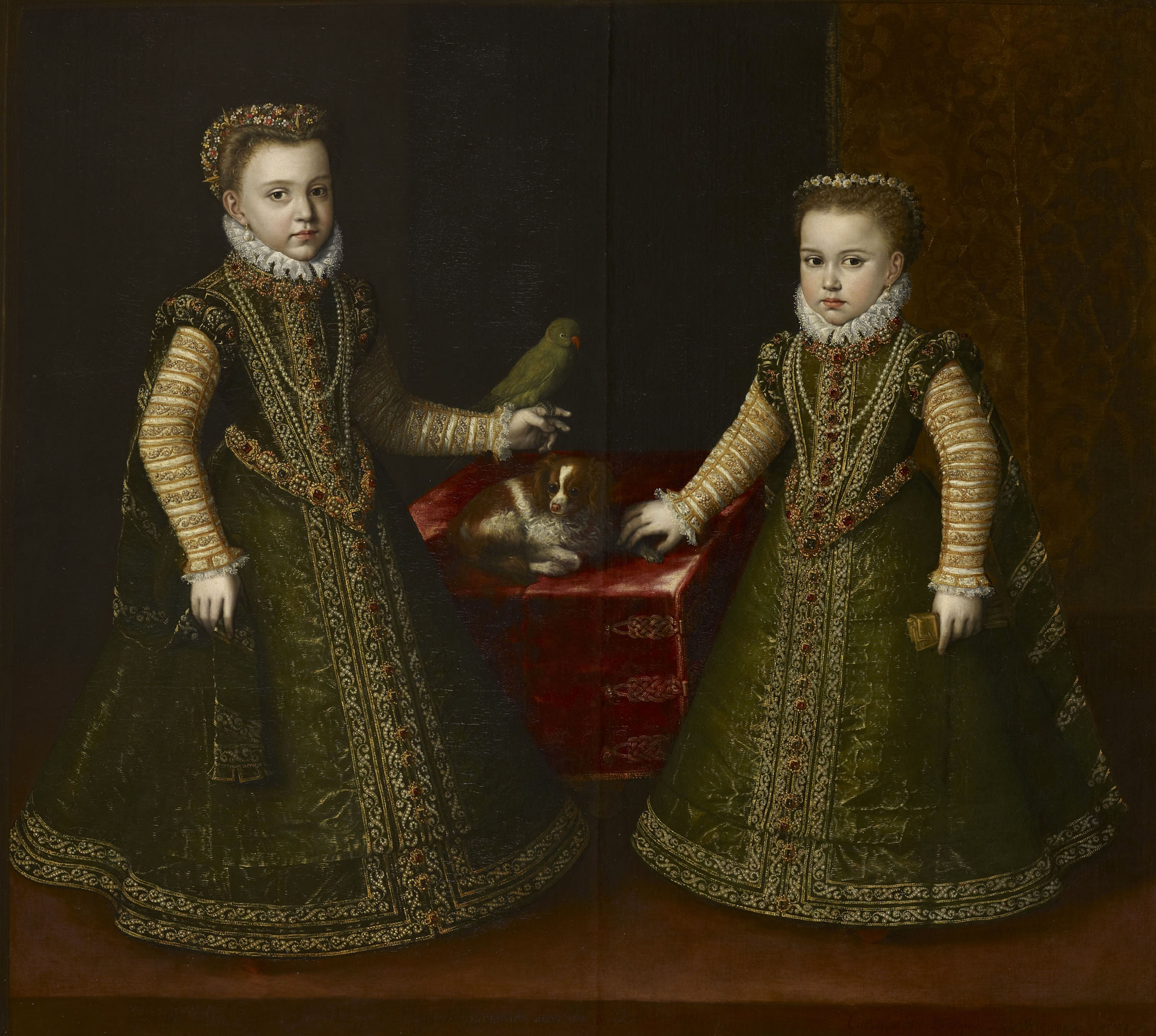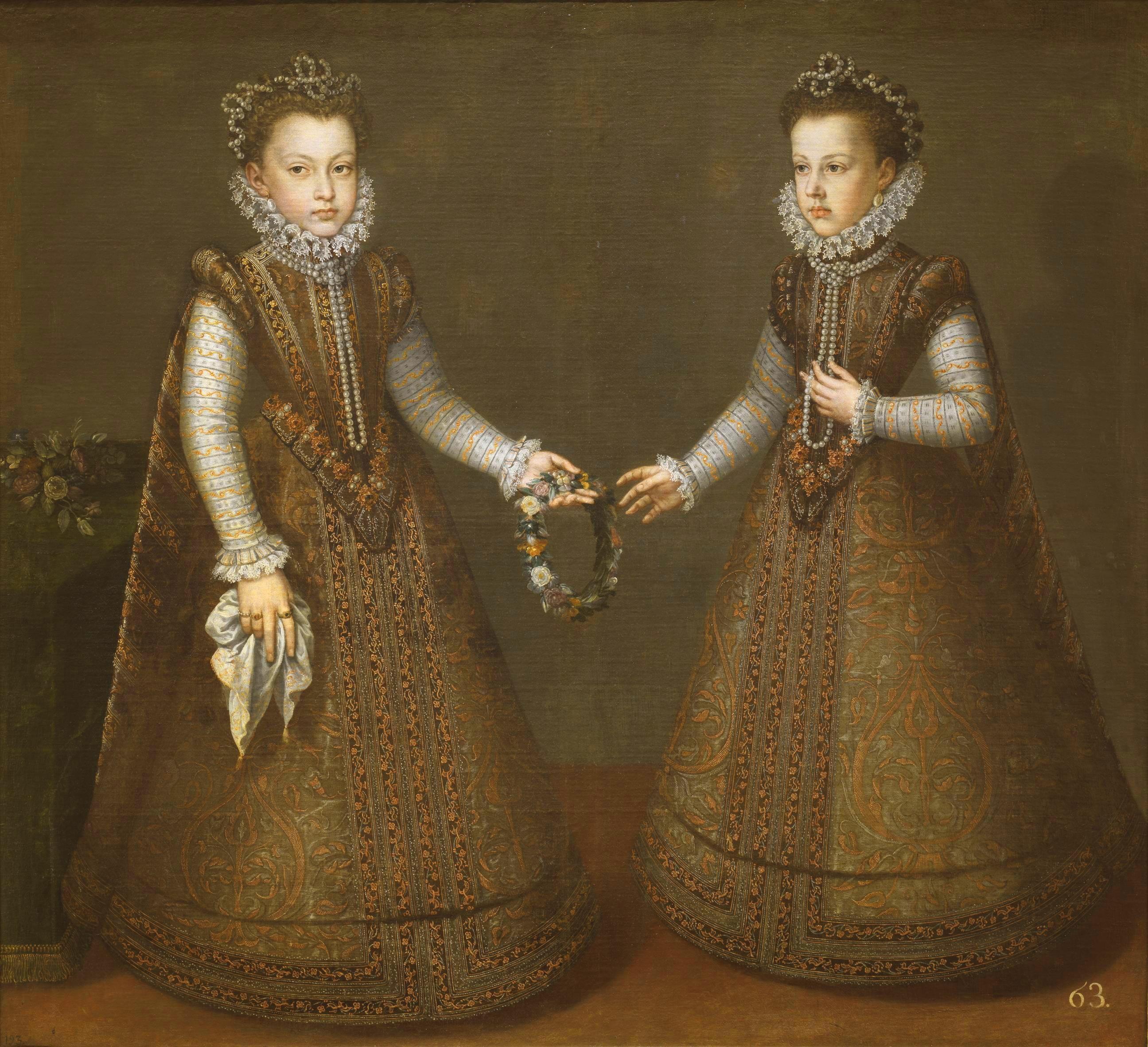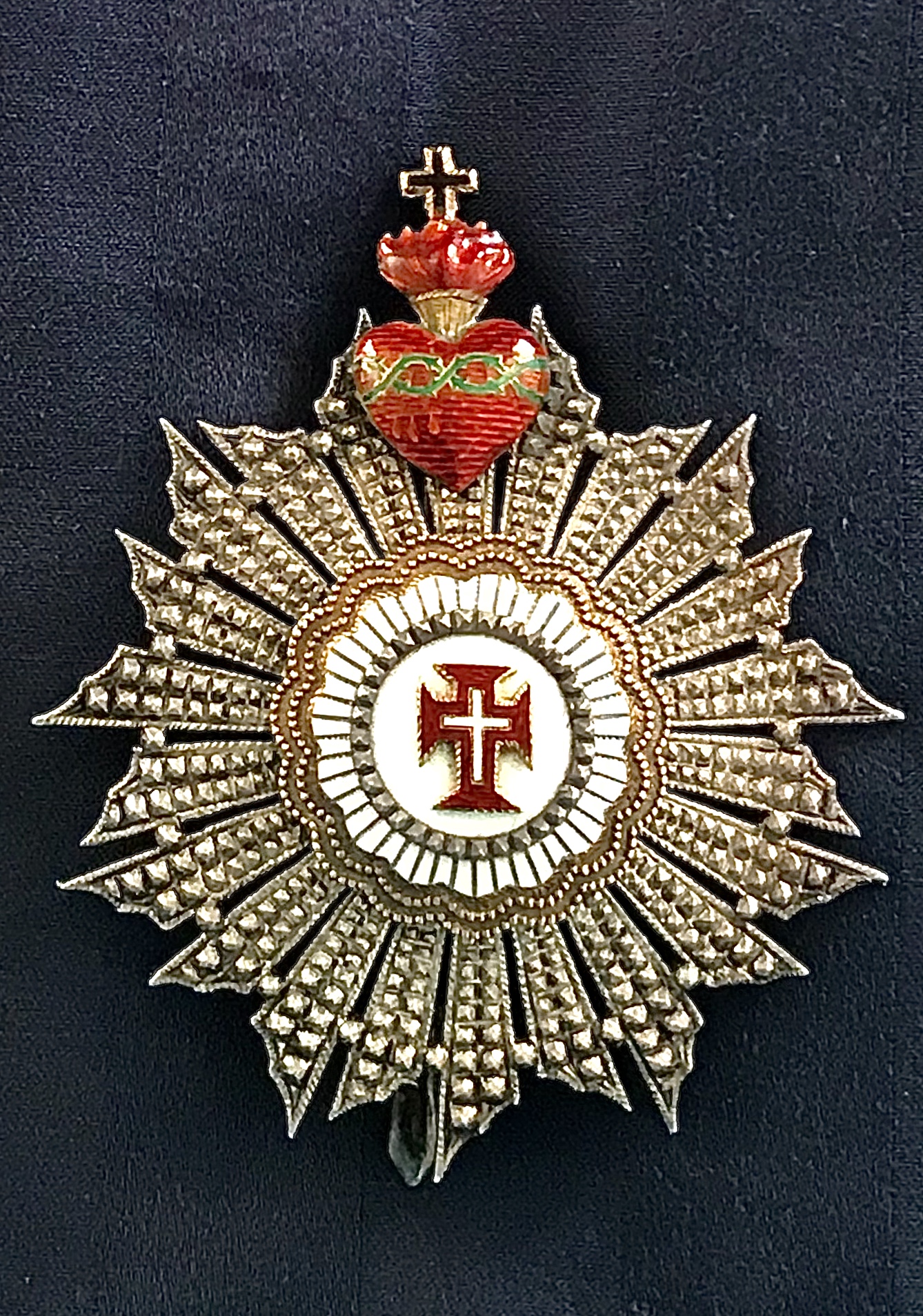|
João I, Duke Of Braganza
Dom João I of Braganza (1543 – 22 February 1583) was the 6th Duke of Braganza and 1st Duke of Barcelos, among other titles. He is known for pushing the claims of his wife, Infanta Catherine of Guimarães, to the throne of Portugal. Life In 1563 he married his 1st cousin Infanta Catherine, daughter of Prince Edward, Duke of Guimarães and Isabel of Braganza (João's aunt). After the disaster of the Battle of Ksar El Kebir, where heirless King Sebastian of Portugal died, the aged Cardinal Henry of Portugal had become King. Because Henry was old and was not allowed to have legitimate children, a dynastical crisis occurred even before the death of the Cardinal. The Duke of Braganza supported his wife's claim to the throne (she was a granddaughter of King Manuel I). Philip II of Spain (another grandson of Manuel I and also claimant to the throne), tried to bribe him to abandon his wife's pretensions, offering him the Vice-Kingdom of Brazil, the post of Grand-Master of the ... [...More Info...] [...Related Items...] OR: [Wikipedia] [Google] [Baidu] |
Palace Of The Dukes Of Braganza
The Palace of the Dukes of Braganza ( pt, Paço dos Duques de Bragança) is a medieval estate and former residence of the first Dukes of Braganza, located in the historical centre of Guimarães ( Oliveira do Castelo), in the north-western part of Portugal. It was initiated between 1420 and 1422 by Afonso, Count of Barcelos, the illegitimate son of John I of Portugal (and future Duke of Bragança), after his marriage to his second wife. His prodigeny would occupy the space until the Dukes of Braganza moved to Vila Viçosa, abandoning the palace. The 16th Century marked the beginning of period of ruin, which was aggravated during the 19th century, when the local population used the palace as a personal quarry. During the Estado Novo regime, a controversial restoration restored the Palace, while implying a grandeur that may not have existed. The ''Palace of the Dukes'' was classified as a National Monument ( pt, Monumento Nacional) in 1910, and has been an official residence for t ... [...More Info...] [...Related Items...] OR: [Wikipedia] [Google] [Baidu] |
Prince
A prince is a male ruler (ranked below a king, grand prince, and grand duke) or a male member of a monarch's or former monarch's family. ''Prince'' is also a title of nobility (often highest), often hereditary, in some European states. The female equivalent is a princess. The English word derives, via the French word ''prince'', from the Latin noun , from (first) and (head), meaning "the first, foremost, the chief, most distinguished, noble ruler, prince". Historical background The Latin word (older Latin *prīsmo-kaps, literally "the one who takes the first lace/position), became the usual title of the informal leader of the Roman senate some centuries before the transition to empire, the '' princeps senatus''. Emperor Augustus established the formal position of monarch on the basis of principate, not dominion. He also tasked his grandsons as summer rulers of the city when most of the government were on holiday in the country or attending religious rituals, ... [...More Info...] [...Related Items...] OR: [Wikipedia] [Google] [Baidu] |
Catalina Micaela Of Spain
Catherine Michaela of Spain (; 10 October 1567 – 6 November 1597) was Duchess of Savoy by marriage to Duke Charles Emmanuel I. She ruled the Duchy several times as regent in Charles Emmanuel's absence, notably during his campaign in 1594.Dizionario Biografico degli Italiani – Volume 22 (1979) She was the younger surviving daughter of Philip II of Spain and Elisabeth of Valois. Early life Catherine Michaela was the daughter of Philip II, ruler of the vast Spanish Empire, and his third wife, the French princess Elisabeth of Valois. She was described as beautiful, intelligent, arrogant and well aware of her high social status. Though her father did not attend her christening and was not as rejoiced at the birth of a daughter as he had been with her elder sister, Isabella Clara Eugenia, she had a good relationship with him. Philip and Catherine Michaela exchanged letters throughout her life. She had a close relationship with her sister. They were raised together under the ca ... [...More Info...] [...Related Items...] OR: [Wikipedia] [Google] [Baidu] |
Isabella Clara Eugenia
Isabella Clara Eugenia ( es, link=no, Isabel Clara Eugenia; 12 August 1566 – 1 December 1633), sometimes referred to as Clara Isabella Eugenia, was sovereign of the Spanish Netherlands in the Low Countries and the north of modern France with her husband, Archduke Albert VII of Austria. Their reign is considered the Golden Age of the Spanish Netherlands. Isabella was one of the most powerful women in 16th- and 17th-century Europe. Early life Childhood Isabella Clara Eugenia of Austria was born in the Palacio del bosque de Valsaín, Segovia on 12 August 1566. She was the first surviving daughter of King Philip II of Spain and his third wife, Elisabeth of Valois. Her father was reportedly overjoyed at her birth and declared himself to be happier on the occasion than he would have been at the birth of a son. He already had a male heir, Carlos, Prince of Asturias, but father and son had never developed a close rapport and frequently lived in conflict with one another ... [...More Info...] [...Related Items...] OR: [Wikipedia] [Google] [Baidu] |
India
India, officially the Republic of India (Hindi: ), is a country in South Asia. It is the seventh-largest country by area, the second-most populous country, and the most populous democracy in the world. Bounded by the Indian Ocean on the south, the Arabian Sea on the southwest, and the Bay of Bengal on the southeast, it shares land borders with Pakistan to the west; China, Nepal, and Bhutan to the north; and Bangladesh and Myanmar to the east. In the Indian Ocean, India is in the vicinity of Sri Lanka and the Maldives; its Andaman and Nicobar Islands share a maritime border with Thailand, Myanmar, and Indonesia. Modern humans arrived on the Indian subcontinent from Africa no later than 55,000 years ago., "Y-Chromosome and Mt-DNA data support the colonization of South Asia by modern humans originating in Africa. ... Coalescence dates for most non-European populations average to between 73–55 ka.", "Modern human beings—''Homo sapiens''—originated in Africa. Then, interm ... [...More Info...] [...Related Items...] OR: [Wikipedia] [Google] [Baidu] |
Order Of Christ (Brazil)
The Imperial Order of Our Lord Jesus Christ ( pt, Imperial Ordem de Nosso Senhor Jesus Cristo), simply named Order of Christ, is an order of chivalry instituted by emperor Pedro I of Brazil on 7 December 1822, on the basis of the Portuguese Order of Christ founded by King Dom Dinis and Pope John XXII in 1316–1319. The order was used to award persons for exceptional services that resulted in notable and proven utility to religion (Roman Catholicism), to humanity and the state. Knights of the Order of Christ were part of the untitled nobility of the Empire of Brazil. On 22 March 1890, the order was cancelled as national order by the interim government of United States of Brazil. However, since the deposition in 1889 of the last Brazilian monarch, Emperor Pedro II, the order is claimed as a house order, being awarded by the heads of the House of Orleans-Braganza, pretenders to the defunct throne of Brazil. The current Brazilian Imperial Family is split into two branches, ... [...More Info...] [...Related Items...] OR: [Wikipedia] [Google] [Baidu] |
Brazil
Brazil ( pt, Brasil; ), officially the Federative Republic of Brazil (Portuguese: ), is the largest country in both South America and Latin America. At and with over 217 million people, Brazil is the world's fifth-largest country by area and the List of countries and dependencies by population, seventh most populous. Its capital is Brasília, and List of cities in Brazil by population, its most populous city is São Paulo. The federation is composed of the union of the 26 States of Brazil, states and the Federal District (Brazil), Federal District. It is the largest country to have Portuguese language, Portuguese as an List of territorial entities where Portuguese is an official language, official language and the only one in the Americas; one of the most Multiculturalism, multicultural and ethnically diverse nations, due to over a century of mass Immigration to Brazil, immigration from around the world; and the most populous Catholic Church by country, Roman Catholic-major ... [...More Info...] [...Related Items...] OR: [Wikipedia] [Google] [Baidu] |
Philip II Of Spain
Philip II) in Spain, while in Portugal and his Italian kingdoms he ruled as Philip I ( pt, Filipe I). (21 May 152713 September 1598), also known as Philip the Prudent ( es, Felipe el Prudente), was King of Spain from 1556, King of Portugal from 1580, and King of Naples and Sicily from 1554 until his death in 1598. He was '' jure uxoris'' King of England and Ireland from his marriage to Queen Mary I in 1554 until her death in 1558. He was also Duke of Milan from 1540. From 1555, he was Lord of the Seventeen Provinces of the Netherlands. The son of Emperor Charles V and Isabella of Portugal, Philip inherited his father's Spanish Empire in 1556 and succeeded to the Portuguese throne in 1580 following a dynastic crisis. The Spanish conquests of the Inca Empire and of the Philippines, named in his honor by Ruy López de Villalobos, were completed during his reign. Under Philip II, Spain reached the height of its influence and power, sometimes called the Spanish Golden Age, a ... [...More Info...] [...Related Items...] OR: [Wikipedia] [Google] [Baidu] |
Manuel I Of Portugal
Manuel I (; 31 May 146913 December 1521), known as the Fortunate ( pt, O Venturoso), was King of Portugal from 1495 to 1521. A member of the House of Aviz, Manuel was Duke of Beja and Viseu prior to succeeding his cousin, John II of Portugal, as monarch. Manuel ruled over a period of intensive expansion of the Portuguese Empire owing to the numerous Portuguese discoveries made during his reign. His sponsorship of Vasco da Gama led to the Portuguese discovery of the sea route to India in 1498, resulting in the creation of the Portuguese India Armadas, which guaranteed Portugal's monopoly on the spice trade. Manuel began the Portuguese colonization of the Americas and Portuguese India, and oversaw the establishment of a vast trade empire across Africa and Asia. He was also the first monarch to bear the title: ''By the Grace of God, King of Portugal and the Algarves, this side and beyond the Sea in Africa, Lord of Guinea and the Conquest, Navigation and Commerce in Ethi ... [...More Info...] [...Related Items...] OR: [Wikipedia] [Google] [Baidu] |
Struggle For The Throne Of Portugal
Struggle may refer to: Film and TV * ''Struggle'' (2003 film), an Austrian film * Struggle (2013 film) * ''Struggle'' (TV series), 2007 Chinese TV series Music * ''Struggle'' (Nonpoint album), 1999 release * Struggle (Woody Guthrie album), 1990 * "Struggle", a track on Ashanti's 2008 album ''The Declaration'' * "Struggle", a 1989 song by Keith Richards * "Struggle", a 2002 song by Radio 4 See also * Class struggle, a key concept in Marxism * Conflict * ''My Struggle (; ''My Struggle'' or ''My Battle'') is a 1925 autobiographical manifesto by Nazi Party leader Adolf Hitler. The work describes the process by which Hitler became antisemitic and outlines his political ideology and future plans for Ger ...'', or ''Mein Kampf'', book by Adolf Hitler * The Struggle (other) {{disambiguation ... [...More Info...] [...Related Items...] OR: [Wikipedia] [Google] [Baidu] |
Henry, King Of Portugal
Henry ( pt, Henrique ; 31 January 1512 — 31 January 1580), dubbed the Chaste ( pt, o Casto, links=no) and the Cardinal-King ( pt, o Cardeal-Rei, links=no), was king of Portugal and a cardinal of the Catholic Church, who ruled Portugal between 1578 and 1580. As a clergyman, he was bound to chastity, and as such, had no children to succeed him, and thus put an end to the reigning House of Aviz. His death led to the Portuguese succession crisis of 1580 and ultimately to the 60-year Iberian Union that saw Portugal share a monarch with that of Habsburg Spain. The next independent monarch of Portugal would be John IV, who restored the throne after 60 years of Spanish rule. Life Born in Lisbon, Henry was the fifth son of King Manuel I of Portugal and Maria of Aragon. Cardinal As the younger brother of King John III of Portugal and a younger son in the Royal Family, Henry was not expected to succeed to the Portuguese throne. Early in his life, Henry took Holy Orders to promot ... [...More Info...] [...Related Items...] OR: [Wikipedia] [Google] [Baidu] |
Sebastian Of Portugal
Sebastian ( pt, Sebastião I ; 20 January 1554 – 4 August 1578) was King of Portugal from 11 June 1557 to 4 August 1578 and the penultimate Portuguese monarch of the House of Aviz. He was the son of João Manuel, Prince of Portugal, and his wife, Joanna of Austria. He was the grandson of King John III of Portugal and Holy Roman Emperor Charles V. He disappeared (presumably killed in action) in the battle of Alcácer Quibir, against the Saadians of Morocco. Sebastian I is often referred to as ''the Desired'' (Portuguese: ''o Desejado'') or ''the Hidden'' (Portuguese: ''o Encoberto''), as the Portuguese people longed for his return to end the decline of Portugal that began after his death. He is considered to be the Portuguese example of the King asleep in mountain legend as Portuguese tradition states his return, in a foggy dawn, in Portugal's greatest hour of need. Early life Sebastian was born shortly after eight in the morning of 20 January 1554 (the feast of Saint Seba ... [...More Info...] [...Related Items...] OR: [Wikipedia] [Google] [Baidu] |






.png)
.jpg)